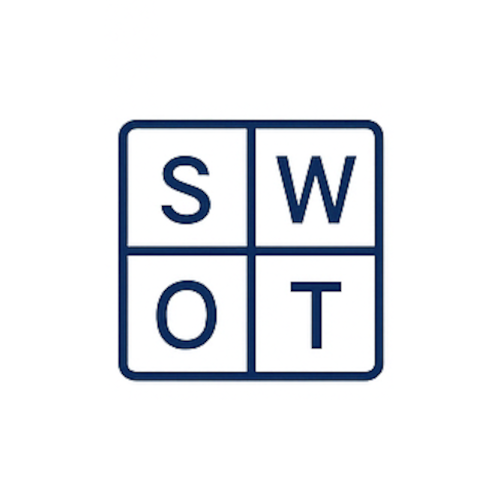Many business owners are tempted to manage their companies on an ad-hoc basis, focusing on immediate challenges and short-term growth ambitions without a well-defined plan. While this approach offers flexibility and can address urgent needs, it often overlooks the importance of systematic planning and strategic management. Understanding the potential drawbacks of ad-hoc decision-making can underscore the value of a more structured approach.
1. Lack of Direction
Ad-hoc businesses often lack a clear strategic direction. Without a defined plan or roadmap, they may struggle to achieve their goals. This absence of direction can result in missed opportunities and inefficient use of resources. Without a cohesive strategy, businesses may find themselves pursuing disparate objectives that don’t contribute to long-term success. A well-defined strategy helps businesses set clear objectives, prioritize actions, and stay focused on long-term goals, reducing the risk of aimless effort and wasted resources.
2. Inefficient Resource Allocation
When businesses operate without comprehensive planning, they risk misallocating critical resources such as time, funds, and manpower. In an ad-hoc environment, resources might be spread too thinly or invested in areas that don’t contribute to the company’s desired development plans. This approach can lead to inefficiencies and missed opportunities for more impactful investments. Strategic planning ensures that resources are allocated where they will have the most significant effect, supporting and improving operational efficiency.
3. Disorganized Teams
Teams working in an ad-hoc setting often lack cohesion and a unified vision. This disorganization can lead to missed deadlines, a lack of accountability, and internal conflicts. When team members are not aligned with a common goal or strategy, their efforts can become fragmented, leading to decreased productivity and morale. Clear planning and strategic management help ensure that teams are coordinated, responsibilities are well-defined, and efforts are directed towards common objectives. This alignment enhances overall productivity and encourages a more positive work environment.
4. Reactive Problem-Solving
Ad-hoc businesses often find themselves operating in a constant state of reaction, addressing problems as they arise rather than anticipating and planning for potential issues. This reactive approach can lead to quick fixes and hasty decisions that may not address the root causes of problems. Proactive planning allows businesses to identify potential issues in advance and develop strategies to address them before they escalate. This approach leads to more effective and sustainable solutions, reducing the likelihood of recurring problems.
5. Missed Opportunities
A lack of strategic planning can cause businesses to overlook important growth opportunities and market trends. Without a structured approach, companies may not recognize or adapt to changes in customer needs or industry shifts, hindering their ability to innovate and stay competitive. A well-defined strategy helps businesses stay informed about market developments, identify new opportunities, and position themselves effectively to capitalize on them. By staying ahead of industry trends, businesses can maintain a competitive edge and drive sustained growth.
6. Ineffective Communication
In the absence of a clear strategy, internal communication can suffer. Employees may not fully understand the company’s goals and objectives, leading to decreased engagement and motivation. This lack of clarity can result in misaligned efforts and reduced overall performance. Clear planning and strategic alignment improve communication by ensuring that everyone is on the same page regarding the company’s direction and priorities. When employees understand how their work contributes to the broader organizational goals, they are more likely to be engaged and motivated, leading to better outcomes.
7. Lack of Adaptability
Ad-hoc businesses may find it challenging to adapt to changing market conditions. Their reactive nature can impede their ability to pivot effectively when necessary, leaving them vulnerable to market shifts. In contrast, businesses with a strategic plan are better equipped to anticipate and respond to changes, allowing them to adjust their approach and remain competitive in a dynamic environment. A strategic plan provides a framework for evaluating potential changes and making informed decisions, ensuring that the business remains agile and resilient.
8. Wasted Resources
The ad-hoc approach often leads to redundant efforts and wasted resources. Companies might spend time and effort redoing work or reversing decisions due to inadequate planning. This inefficiency consumes valuable resources and can slow progress, ultimately hindering the company’s ability to achieve its goals. Strategic planning helps minimize waste by providing a clear framework for decision-making and ensuring that efforts are aligned with the company’s objectives. By reducing redundancy and focusing on high-impact activities, businesses can optimize resource use and drive better results.
9. Increased Risk
Businesses that operate without a strategic framework are more vulnerable to risks and uncertainties. They may be ill-prepared to handle crises effectively, which can result in significant financial and reputational damage. A well-developed strategy includes risk management plans that help businesses anticipate and mitigate potential threats, improving their ability to navigate challenges and recover from setbacks. By incorporating risk management into the strategic planning process, businesses become more resilient and better prepared for the future.
Conclusion
While flexibility and adaptability are important, they should be balanced with thoughtful planning and strategic management. Integrating these elements helps businesses achieve stability, make informed decisions, and ultimately succeed in a competitive environment. Companies that rely solely on ad-hoc management may find themselves struggling with inefficiencies, missed opportunities, and increased risks.
To address the challenges of ad-hoc management, businesses can benefit from solutions that emphasize structured planning and strategic alignment. Sengi Solutions offers services designed to help businesses implement effective planning processes, align their teams around common goals, and optimize resource allocation. By leveraging these solutions, businesses can enhance their efficiency, improve their ability to seize opportunities, and build a more resilient and successful organization.












